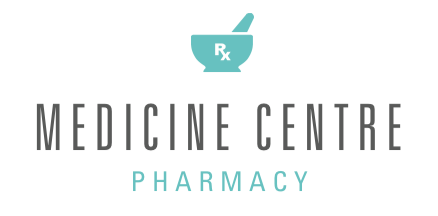To Visit Online Pharmacy Click HERE ↓
Bactroban for Mrsa: What You Should Know
What Is Bactroban: an Overview
Bactroban is a topical antibiotic that combats bacterial skin infections. Known generically as mupirocin, this prescription ointment is primarily used to treat infections caused by Staphylococcus aureus, including Methicillin-resistant Staphylococcus aureus (MRSA).
Its active ingredient works by inhibiting the synthesis of proteins necessary for bacterial survival. Bactroban is particularly potent against MRSA, a notorious superbug resistant to most antibiotics. Recieve
Understanding the necessity of proper application can make a significant difference in the effectiveness of Bactroban in battling infections. While many users find it effective, knowing its strengths and limitations is crucial. Publically
| Active Ingredient | Usage | Effectiveness |
|---|---|---|
| Mupirocin | Topical Antibiotic | Highly Effective Against MRSA |
How Bactroban Works Against Mrsa

When used to combat MRSA, Bactroban operates by inhibiting the bacteria's ability to produce essential proteins needed for their survival. This is achieved through its active ingredient, mupirocin, which disrupts the bacterial protein synthesis process. By blocking the tRNA synthetase enzyme, mupirocin effectively halts the bacterial growth, providing the body's immune system with an opportunity to eliminate the infection more efficiently. Patients often begin noticing improvements shortly after starting their prescribed treatment.
However, to acheive optimal results, it's crucial to use Bactroban exactly as directed by a healthcare provider. This includes applying the ointment to the affected area consistently and at the same times each day. An inconsistency or incomplete course of treatment can lead to suboptimal results and even contribute to antibiotic resistance, making future infections more challenging to treat.
Proper Usage of Bactroban Cream
Applying Bactroban cream correctly is crucial for ensuring its effectiveness against MRSA. Begining with clean hands, gently apply a small amount of bactroban to the afected area. Cover the treated area with a sterile bandage if recommended by your healthcare provider. This minimizes the risk of spreading the infection to other parts of your body or to other individuals.
It's neccessary to use Bactroban exactly as prescribed by your doctor, generally three times a day. Avoid using more or less than directed, as improper use can lead to resistant bacteria. Additionally, never share your Bactroban tube, to prevent cross-contamination. Always consult with your healthcare provider if you notice unusual symptoms or if the infection does not show signs of improvement.
Side Effects and Precautions of Bactroban

When using Bactroban, it’s essential to be mindful of potential side effects. Some users may experience itching, burning, or redness at the application site. Although these symptoms are usually mild, it’s important to monitor them closely. Severe allergic reactions, such as rash, swelling, or difficulty breathing, may rarely occur and would necessitate immediate medical attention. Additionally, prolonged use can lead to antibiotic resistance, making it crucial to follow your healthcare provider’s instructions carefully.
Precautions should also be taken when using Bactroban. Avoid applying the cream near your eyes, nose, or mouth, and only use it on the skin unless otherwise directed. Pregnant or breastfeeding women should consult their healthcare provider before starting treatment. It’s advisable to keep the affected area clean and covered to prevent further infection. Lastly, inform your doctor of any other medications you are taking to avoid potential interactions and acomplish the best outcome.
Comparative Effectiveness: Bactroban Vs. Other Mrsa Treatments
When comparing Bactroban to other MRSA treatments, several factors must be considered. Bactroban, or mupirocin, is a topical antibiotic specifically designed for skin infections, making it a targeted option against MRSA. Unlike systemic antibiotics, Bactroban poses a minuscule risk of adverse systemic effects, enhancing patient tolerance. However, it is crucial to note that its efficacy is often limited to localized infections. In contrast, systemic treatments like oral or intravenous antibiotics can tackle more severe or widespread infections.
Factor Bactroban Other Treatments Type Topical Oral/Intravenous Applicability Localized infections Severe/Widespread infections Adverse Effects Minuscule system risk Higher systemic risk
While Bactroban is undoubtedly effective for small, localized infections, systemic antibiotics may still be the better choice for more severe cases. This comparative analysis underscores teh importance of proper diagnosis and treatment planning, which healthcare providers should tailor to each individual patient's needs.
Where to Buy and Availability Information
Finding Bactroban for treating MRSA is relatively straightforward, and it is widely available both physically and online. You can often find it in local pharmacies where a pharmacist can guide you on its availability and proper usage. Additionally, many hospitals and clinics carry it, offering an immediate option for those in need. If you prefer online shopping, numerous reputable medical supply websites provide detailed descriptions and guidelines to ensure that you receive the correct product. Checking these platforms can also help you compare prices and read reviews from other users.
However, it's important to consult a healthcare professional before purchasing to avoid potential misuse. It's worth noting that while Bactroban is generally accessible, a prescription may be required in many regions, depending on local regulations. This is to ensure that patients use it correctly and only when absolutely necessary. Always follow the recommended dosage and instructions provided by your healthcare provider to maximize effectiveness and minimize risks.
Given the importance of adhering to prescribed treatments for MRSA, being diligent about where and how you acquire Bactroban can significantly influence treatment outcomes. Make an informed decision by referring to reliable sources for medical information and guidelines. For more detailed information on Bactroban and its applications, you can refer to [scientific resource](https://www.example.com/bactroban-info) and comprehensive guidance from [another trusted site](https://www.example.com/bactroban-guide).

